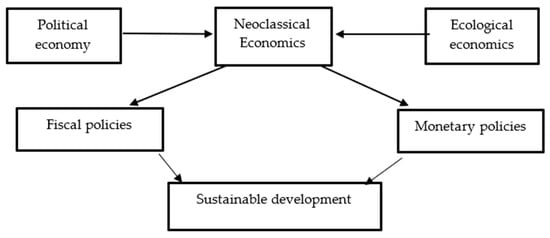Published: July 4, 2025 | Author: Lanka Biz News Team
As the sun rises over Sri Lanka on this Friday morning, July 4, 2025, at 05:47 AM +0530, a growing concern is casting a shadow over the nation’s booming e-commerce sector. The recent surge in online shopping from global platforms like AliExpress and Temu has exposed a critical flaw in Sri Lanka’s customs and tax framework, leading to delays, frustration, and an urgent call for reform. This article delves into the unfolding e-commerce tax crisis, its root causes, global benchmarks, and the path forward for Sri Lanka’s economy.
The Spark: A Surge in E-Commerce Imports
The story begins with the explosive growth of cross-border e-commerce in Sri Lanka. Platforms like AliExpress and Temu, fueled by aggressive marketing and ultra-low prices, have transformed how Sri Lankans shop. From smartwatches to quirky chicken figurines, consumers have embraced the convenience of global marketplaces. However, this boom has overwhelmed the country’s informal customs processing system.
Until recently, e-commerce parcels were handled through a loophole where agents declared items in bulk as “miscellaneous” or “personal goods,” paying a nominal tax of Rs. 350-800 per kilogram. This workaround, while convenient, generated minimal revenue and flew under the radar due to low volumes. That changed with Temu’s entry. The platform’s widespread advertising campaigns and dirt-cheap offerings triggered a massive influx of orders, causing cargo volumes to skyrocket. According to recent X posts by @numberslka, this sudden spike caught the attention of Parliament committees, who questioned the legality of the informal tax system.
The Pivot: From Loophole to Lockdown
Faced with mounting pressure and exposed revenue losses, Sri Lanka’s customs authorities scrapped the informal system overnight. Now, every parcel—numbering in the tens of thousands—requires individual declaration and taxation based on the Harmonized System (HS) Code. This shift, while aimed at plugging the revenue gap, has led to a customs backlog, leaving packages stranded and consumers waiting.
The lack of a streamlined process has turned a convenience into a headache. Social media reactions on X reflect this frustration, with users like @wimal_k reporting shipping costs on AliExpress soaring to Rs. 20,000, while @thilankadinush questions why items aren’t released within days despite the tax change. The consensus? The government’s abrupt decision has created chaos rather than clarity.

Global Benchmarks: Lessons from Abroad
Sri Lanka’s predicament is not unique. E-commerce taxation challenges are a global issue as trade shifts from traditional imports to individual online purchases. Countries worldwide have adopted two primary models to address this:
- Restrictive Model: Nations like Brazil and India impose steep taxes—60%-90%—on cross-border e-commerce, treating it like conventional imports. This approach discourages online shopping but protects local industries. However, it may stifle consumer access to affordable goods, a concern echoed by @malindaprasad, who notes Sri Lanka’s reliance on these platforms due to limited local alternatives.
- Vendor Collection Model: Countries like Singapore and Australia have embraced a more progressive system. Here, platforms like Temu collect taxes at checkout—e.g., a flat 18% VAT for mid-value goods—and remit them to the government via local partners. Low-value items below a de minimis threshold escape taxation, while high-value goods require separate declarations. A 2023 UNCTAD report highlights that 80% of e-commerce-active nations use such frameworks, citing efficiency and scalability.
The vendor collection model stands out for its transparency and adaptability. In the U.S., for instance, the Customs and Border Protection agency reported a 30% increase in inspections in 2024, underscoring the need for automated tax collection to handle rising volumes. For Sri Lanka, adopting a similar system could resolve the current customs gridlock.
The Economic Stakes: A $500 Million Market at Risk
Sri Lanka’s cross-border e-commerce market is currently valued at approximately $500 million, with projections of exponential growth in the coming years. This sector holds immense potential to boost consumer spending, create jobs in logistics, and integrate the nation into the global digital economy. Yet, without a robust legal framework, this opportunity could turn into a liability.
The absence of a vendor collection system is the crux of the problem. As @numberslka points out, Sri Lanka lacks the legislation to mandate platforms like AliExpress and Temu to collect taxes at source. This gap forces customs to shoulder an unsustainable burden, leading to delays and inefficiencies. Critics on X, including @razeem27, argue that the government’s tax obsession overlooks investment opportunities, potentially driving away middle-class consumers who rely on these platforms for affordable goods.
The Human Cost: Frustration and Fairness
Beyond economics, the crisis has a human dimension. Many Sri Lankans use e-commerce for personal items—sponges, watches, or even novelty toys—not for resale. Users like @dehi_lemon_bar call this taxation unfair, questioning why they should pay more when local monopolies already inflate prices. The sentiment is clear: the current system punishes consumers while benefiting neither the government nor local businesses.
Moreover, the government’s hasty response has drawn ire. @Zacchariahshums labels every overnight decision as chaotic, while @onelanka suggests engaging stakeholders like Temu to avoid global backlash. This lack of consultation has fueled perceptions of a government more interested in quick revenue fixes than long-term solutions.
The Way Forward: Political Will and Reform
The solution lies in adopting the vendor collection model, tailored to Sri Lanka’s needs. This would require:
- Legislative Action: Enacting laws to mandate tax collection by platforms at checkout, with clear thresholds for low, mid, and high-value goods.
- Partnerships: Collaborating with e-commerce giants to integrate tax remittance systems, drawing on Singapore’s success.
- Public Awareness: Educating consumers about the new system to rebuild trust and ensure compliance.
Political will is the linchpin. As @numberslka warns, attempting to fix a global issue with overnight solutions is doomed to fail. A phased approach, starting with pilot programs, could test the waters before full implementation. The government must also balance revenue needs with consumer access, perhaps by setting a reasonable de minimis threshold to exempt small-value purchases.
Seizing the E-Commerce Opportunity
Sri Lanka stands at a crossroads. The e-commerce tax crisis, while disruptive, offers a chance to modernize its trade policies and harness a $500 million market’s potential. By learning from global models and addressing local realities, the nation can turn customs chaos into a competitive advantage. As the day unfolds on July 4, 2025, the clock is ticking for policymakers to act. Will Sri Lanka embrace innovation, or cling to outdated systems? The answer will shape its economic future.





